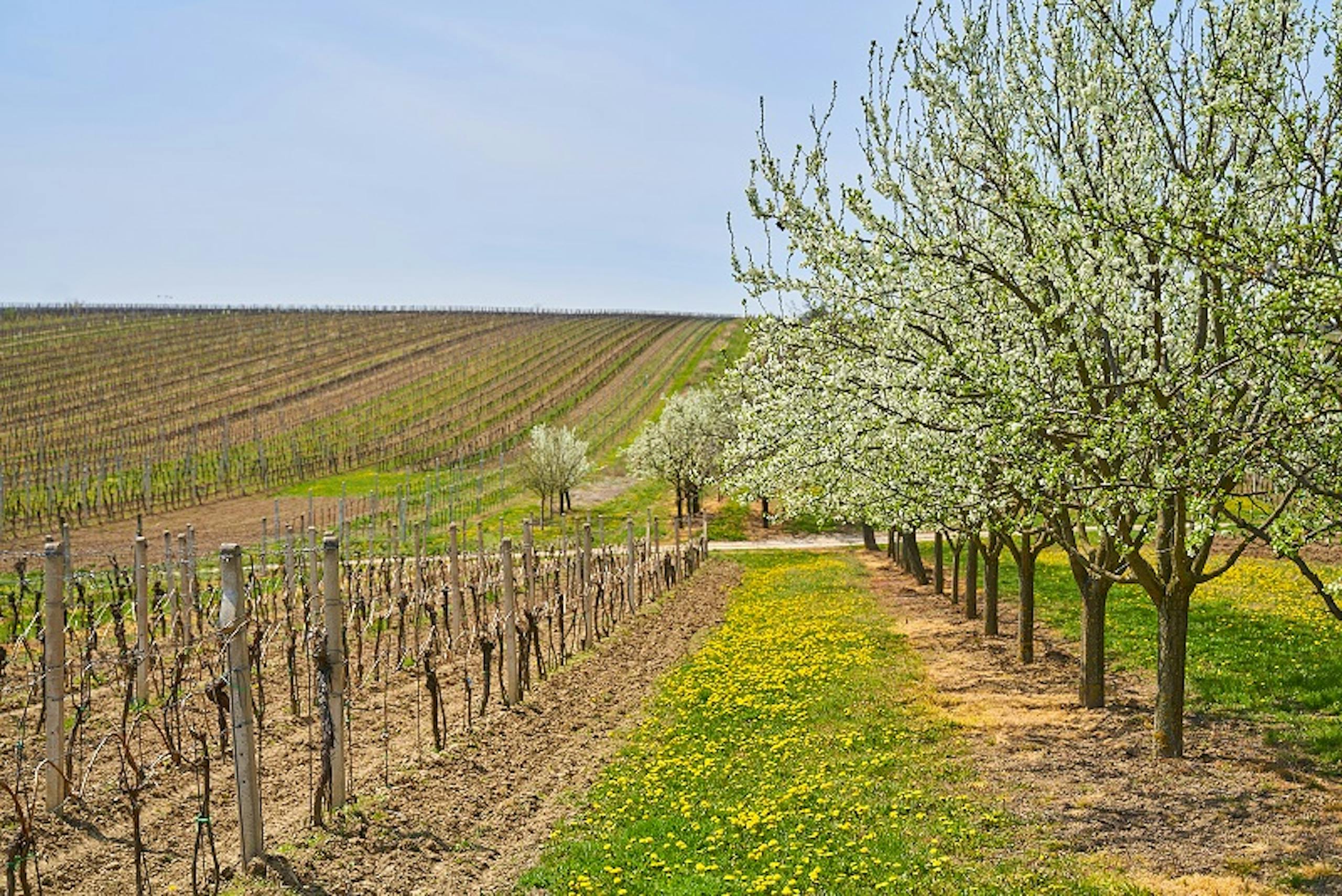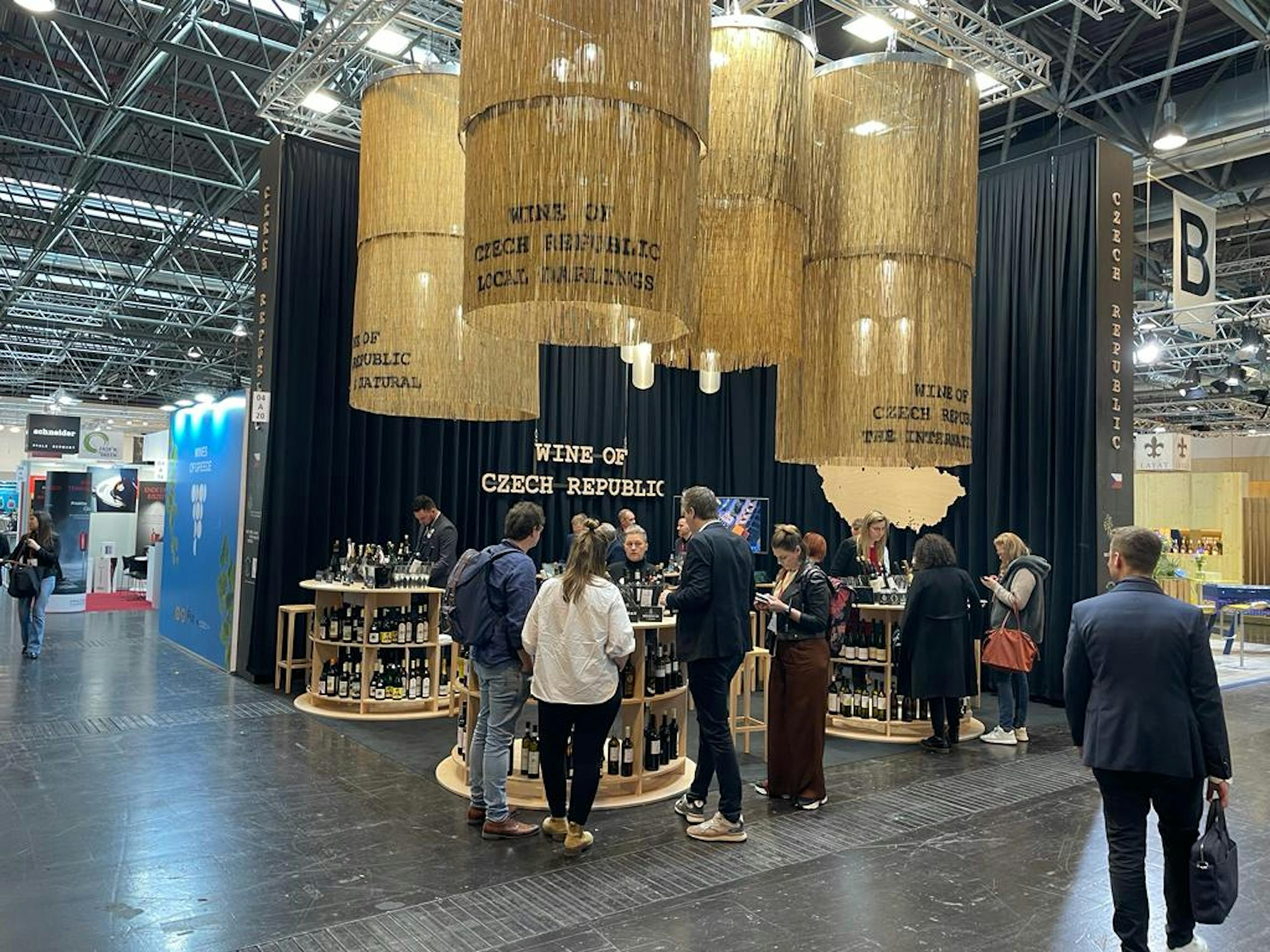Historical Development of the Proprietal Struture
The very nature of the grape vine’s requirements regarding its position, soil and micro-climatic conditions, coupled with the geographical situation of our vineyards on the northern boundaries for viticulture had always limited the vineyard planting on the strictly chosen hillside plots of land – once universally known as the “vineyard slopes“ (which are better expressed in French as côtes – translator’s note). The majority of these originally constituted pastures and land which was lying fallow or else extensively tilled segments of royal, ecclesiastical, aristocratic or bourgeois parcels of land. All such landowners saw in vineyard planting the possibility of acquiring ground rents or tithes from such an intensive crop as the grape vine, and thus supported the planting of vineyards or else they themselves planted them on occasion and distributed the young vineyards amongst the interested parties. It was convenient for the landowners, as well as ultimately for the vineyard tenants, to concentrate the small vineyard holdings in a certain locality in such a manner that the proprietors of the land could better exercise supervision over the tending to the vineyards by the tenants and at the same time be able to collect tithes readily and in a single place, usually just below the vineyards, during the grape harvesting. Such a grouping together of vineyard plots was advantageous too for those cultivating the vines, as a protection against wild animals and as a means of preventing the theft of grapes. Grouping of the vineyards in this way also enabled the vineyard owners on rented lands to join forces and assign to each one a function in regard to the vineyard work. This gave rise to the Vineyard Laws (horenská práva) being enacted in Moravia, 223 of which have survived and whose inventory was compiled by J. Pošvář. Similar bills of rights and obligations had also been in place since the earliest times in Bohemia for all those who were involved in tending to or overseeing the work in the vineyards. Such charters were generally referred to in Bohemia as Vineyard Articles (artykulové viniční) and were entered in the burgomaster’s register. These vineyard rules or articles defined obligations binding the individual to undertake all tasks in connection with vineyard work, the working hours, the rates of pay for work carried out, the means to curb water erosion and the payments of tithes. They also contained the laws and the punishments for those not complying with the regulations and interdictions.
The burgomaster’s register provided important evidence regarding the ownership interests of vineyards. Everyone who owned a vineyard had to enter it in the register (gruntovní kniha) and every year had to come to the town hall on the date set by the gentry or the town council to check the entry in the register. In the case of the vineyard owner appointing someone else to tend to his vineyard, such a person had to be brought in with the owner in order to check the data in the register for which there was usually a fee charged. During the annual general meeting of vineyard owners the rules and regulations were read out to the assembly in part or in their entirety in order that everyone present be fully conversant with the contents thereof. Every year prior to the harvest every vineyard was subject to a ceremony called “vineyard closure” and no-one was allowed to go there other than the sworn wardens and watchmen who came under the direct control of the burgomaster. Only when the town or community council or the nobility had given authorisation and set an exact time, could the vineyard workers begin to harvest the grapes and all at the same time. Although everyone cultivated his vines and produced wine on his own, he was at the same time equally bound by firm organisation to all the others.
No real relaxation of these laws and regulations came until the reign of Josef II, who abolished the local vineyard rules and published vineyard regulations for Moravia. For a certain time the vintners still felt themselves bound to the local vintners’ guild, but when these guilds were dissolved even in Bohemia in 1851, the viticultural communality completely disintegrated. Local wine associations then sprung up in their place but their activities were only rarely purposeful. The decline of viticulture escalated and imports of foreign wines negatively influenced the economic basis of this unstable agricultural sector. It was not until after the First World War that the Union of Czechoslovak Winemakers came into being and in the nineteen thirties many wine cooperatives were founded throughout Moravia. Few individuals at this time were capable of making wine fit for bottling amid the primitive furnishings of their cellars. The vintners felt themselves vulnerable and exposed to the nefarious practices of businessmen and cheap-wine importers. They realised that by forming alliances of small growers or wine-owners’ cooperatives together, whereby all the grapes were jointly processed, would improve the quality and saleability of their wines. The more wine ceased to be an agricultural product the more it became a commercial article which required proper bottling, advertising and commercial links.
The activities of wine cooperatives were halted in the nineteen fifties, cooperatives were turned into nationalised enterprises, and thus the basis was set for the mass-production of wine. This found its partner in the large-scale production conditions for grape processing on the huge estates of the agricultural cooperatives and state enterprises of the time. Their activities saw a substantial increase in plantings of the three most productive grape varieties in Moravia – Welschriesling, Grüner Veltliner and Müller-Thurgau – which soon came to dominate half the surface area of our vineyards. A further quarter was taken up with varieties for the production of red wine and the last part was home to some select varieties for the production of high-quality wines from the best vineyard sites, as well as to some newly developed crossings. People adapted themselves to the varietal composition in the vineyards aimed primarily at turning out a variety of brand-name wines which were topped up with a certain amount of imported wine, since the quantity of home-produced wine barely covered half the nation’s consumption requirements. After the year 1989 vineyard plantings began to be oriented towards varieties fit for the making of wines of the highest quality, and at the same time aiming to produce wines typical of their particular regions of Bohemia and Moravia. The object has been to increase overall authenticity within the sphere of high-quality wines with specific and controlled origin, mainly in the category of wines with special attributes.
Source: Réva a víno v Čechách a na Moravě / Vines and Wine in Bohemia and Moravia
© V. Kraus and collective
© RADIX, spol. s r.o.



